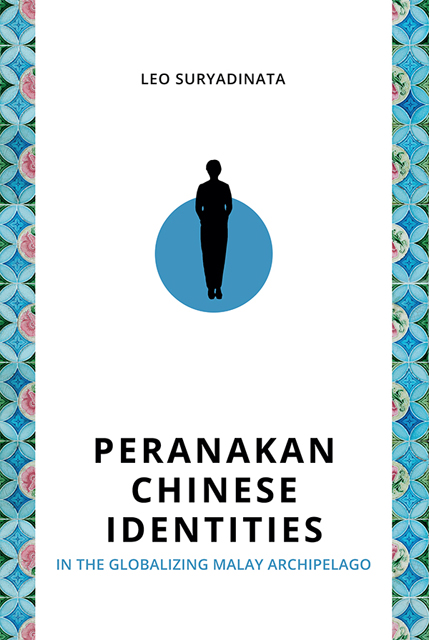Book contents
- Frontmatter
- Contents
- Preface
- Acknowledgements
- Part I Regional Dimensions: Indonesia, Malaysia and Singapore (IMS)
- Part II Focusing on Indonesia
- Appendix 1 The Prospects of the Peranakan Community at the Age of Globalization, by Tan Ta Sen
- Appendix 2 Some Books on the Peranakan Chinese Published between 2007 and 2021
- Bibliography
- Index
- About the Author
2 - Peranakan Chinese Identities in IMS (1): Indonesia
Published online by Cambridge University Press: 01 September 2023
- Frontmatter
- Contents
- Preface
- Acknowledgements
- Part I Regional Dimensions: Indonesia, Malaysia and Singapore (IMS)
- Part II Focusing on Indonesia
- Appendix 1 The Prospects of the Peranakan Community at the Age of Globalization, by Tan Ta Sen
- Appendix 2 Some Books on the Peranakan Chinese Published between 2007 and 2021
- Bibliography
- Index
- About the Author
Summary
Part I of this book examines the historical evolution of Peranakan communities in three countries, namely Indonesia, Malaysia, and Singapore (IMS), their development, decline and recent revival in the era of globalization and the rise of China. This chapter focuses on Indonesia. It will be followed by the next chapter on Malaysia and Singapore. A subsequent chapter will address recent developments of these communities provided with a general conclusion.
Introduction
There are a few books on the study of the Peranakan Chinese in Indonesia, one of them was Peranakan Tionghoa Indonesia: Sebuah Perjalanan Budaya (The Chinese Peranakan in Indonesia: A Cultural Journey), which was published in 2009. This is a coffee table book, written by a few Indonesian Peranakan scholars such as Mona Lohanda, Myra Sidharta, David Kwa and Handinoto etc. It covers Indonesian Peranakan literature, architecture, clothing, and food.
However, the most comprehensive coverage of the Indonesian Chinese history and culture is Tionghoa dalam Keindonesiaan: Peran dan Kontribusi dalam Pembangunan Bangsa (Chinese in the Indonesianess: Roles and Contributions in Nation-Building). The book consists of three volumes, covering the role and contribution of the Indonesian Chinese in more than ten areas such as language, literature, press, culture, arts, sports, designs, food, real estate, banking, economy, health, medicine, architecture, education, military, and politics. This book is not about Peranakan Chinese per se, but the majority of the chapters are in fact related to them.
Origins of the term Peranakan and Baba
No one is certain about the first appearance of the term Peranakan in Indonesia. However, in Dutch publications, Peranakan was already used during the eighteenth century to refer to the offsprings of mixed marriages between foreign males and Indonesian females on the Java Island. However, the term was specifically used by the Dutch to refer to the locally-born Chinese who were Muslim. The Dutch even appointed the Peranakan Kapitan so that Chinese Muslims could be distinguish from the “indigenous Muslims”. However, since 1832 the Peranakan Kapitan in Jakarta was abolished, as the Muslim Chinese were assimilated into the indigenous population. The meaning of Peranakan had also changed. Since then the term was more frequently used to refer to the offsprings of mixed marriages without any religious connotation.
- Type
- Chapter
- Information
- Publisher: ISEAS–Yusof Ishak InstituteFirst published in: 2023



